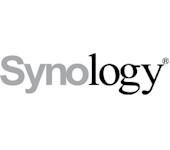 This article is sponsored by Synology.
This article is sponsored by Synology.
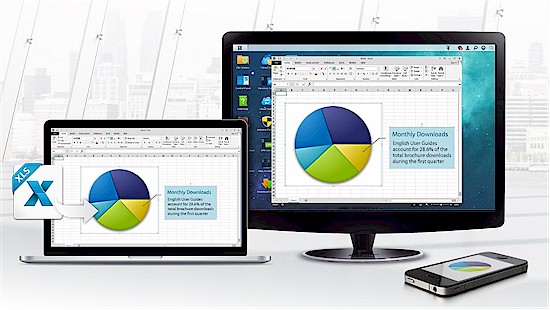
Introduction
Privacy and security concerns are causing savvy cloud storage users to look for alternatives to services like Dropbox, Google Drive and other popular public cloud services. Responding to this need, NAS makers have been steadily improving their products’ private cloud features.
Synology‘s new DSM 5.2 OS brings two key improvements to its Cloud Station private cloud suite: Sharing links and bi-directional sync.
Sharing Links
Sharing links work with Synology’s QuickConnect service. QuickConnect enables client applications to connect to your Synology NAS via the Internet without the hassle of setting up port forwarding rules. It works with Synology mobile apps and Synology packages like Cloud Station.
Sharing files via links using DSM’s File Station has been available for awhile. But with DSM 5.2, you can now share files using links generated right from your Windows, MacOS, Fedora or Ubuntu desktop. Here’s how you do it.
Go to the DSM ControlPanel and enable QuickConnect. Then enter the name you want as the QuickConnect ID and off you go. Note that while you can ask QuickConnect to automatically open ports in your router’s firewall via UPnP, it isn’t necessary. QuickConnect uses a relay service so that apps that talk to QuickConnect don’t have to deal with router firewalls. See the QuickConnect, Quickly Explained blog post for details on how QuickConnect works.
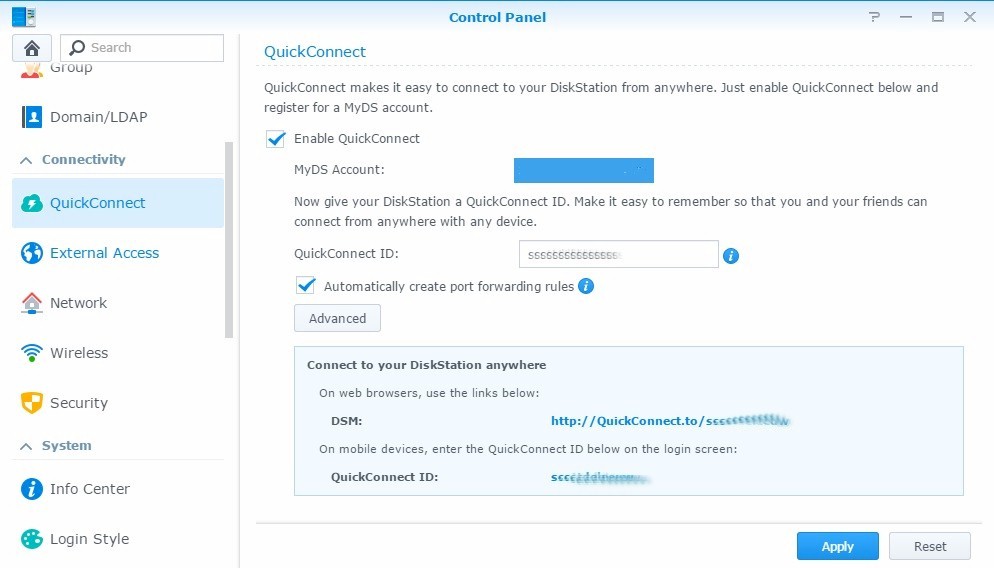
Synology’s QuickConnect setup screen, a key component of Cloud Station
I then installed the Cloud Station Windows client from the Download Center. The helpful video below found in Synology’s Video Tutorial page walks you through the process.![]()
Once the client was installed and running, file sharing is as easy as right-clicking a file or folder on your desktop and choosing "Create a Sharing Link". Cloud Station adds a URL starting with https://gofile.me/ to your clipboard that you can share with whomever you want, you can see the step in the image below.![]()
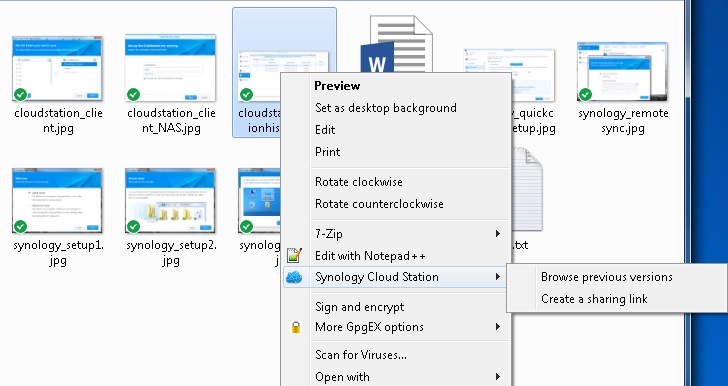
Cloud Station Sharing Link
Bi-directional Sync
Keeping files in selected folders synchronized between two Disk Stations is now old hat. DSM 5.2 can now keep folders synced on multiple Disk Stations, either local or internet connected.
Synology gave me access to a DS1515 in Washington State and I have two Synology NASes in Colorado. I first set up my DS111 as the Cloud Station server.
I then set up my DS213 as a client using the QuickConnect ID and synced the folders I had shared from my desktop. This was as easy as installing the Cloud Station app and picking out a folder(s) I wanted to sync.
Of course there are sync rules that allow you to exclude certain filetypes and subfolders if you wish. The image below shows the folder sync selection screen.
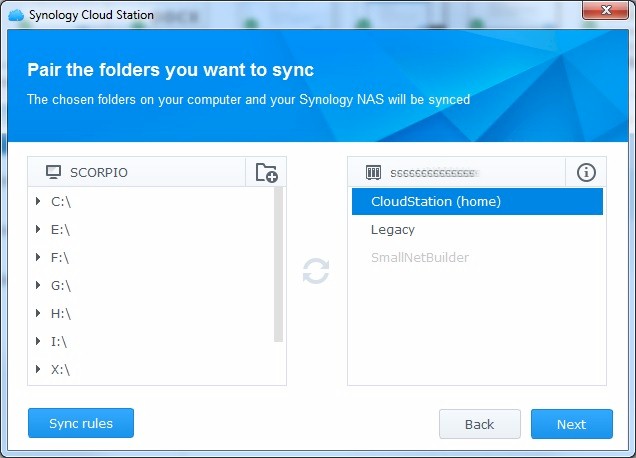
Cloud Station client setup
With that successful, I logged into the DS1515 in Washington State and repeated the same steps, again using my QuickConnect ID.
Once complete, I verified that a change in one file took place on all locations. Setting up a bi-directional sync between four locations, one being remote, took no more than 10 minutes. The image below shows the connection screen for connecting the client, QuickConnect ID and a user on the NAS is all that is needed.
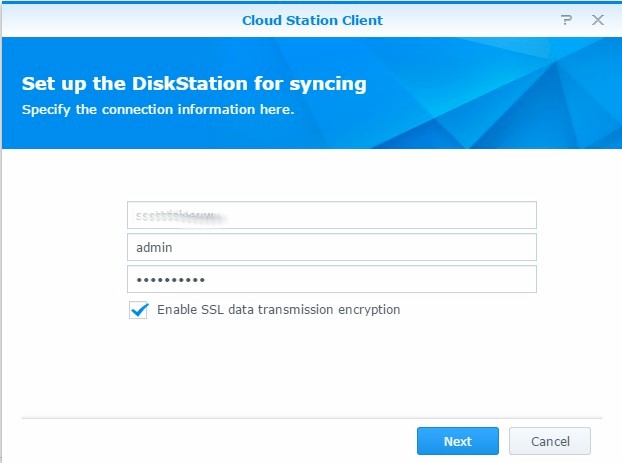
The simple QuickConnect ID method of setting up a Cloud Station client
Another nice feature is the Cloud Station server keeps track of file revisions for any files changed since initial upload. This feature would also be very useful for a share where several people are contributing. Restoring back to a different version is instantaneous and saved revisions are automatic.
The image below shows revision history of a document in the Cloud Station shared directory. Up to 32 file revisions can be tracked before the oldest revision rotates out to make room for a new one.
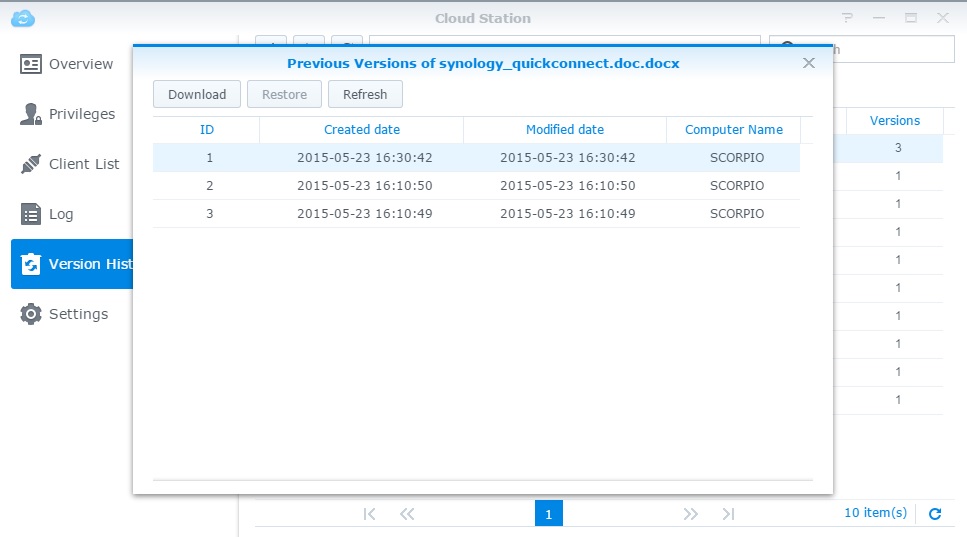
Cloud Station’s file version history
Accessing your files away from home or business can be a painstaking process. There are lots of different ways to make it happen, some easier than others, some more feature-rich than others. Synology QuickConnect and Cloud Station make it easy and have lots of great features.
To learn more about Public, Private and Hybrid Cloud technology, check out this Synology Blog post.
